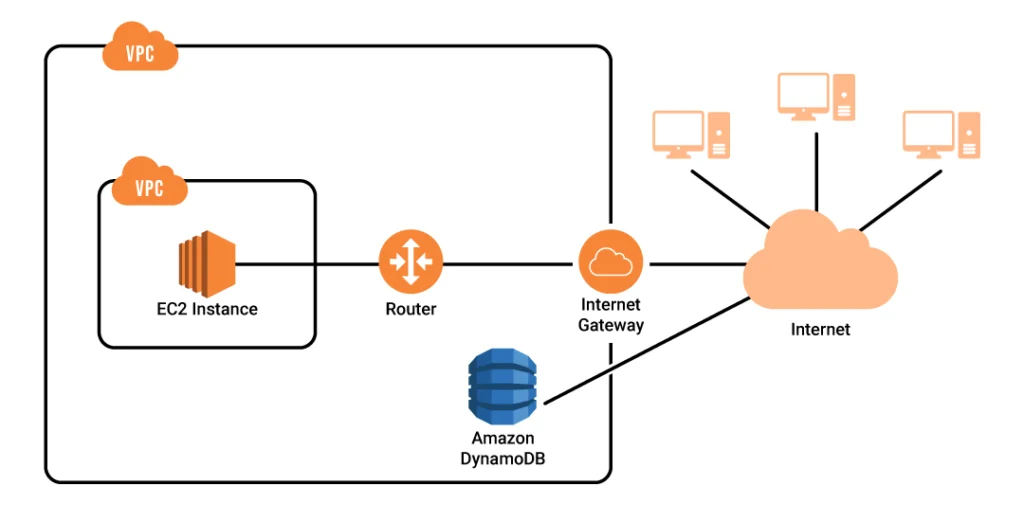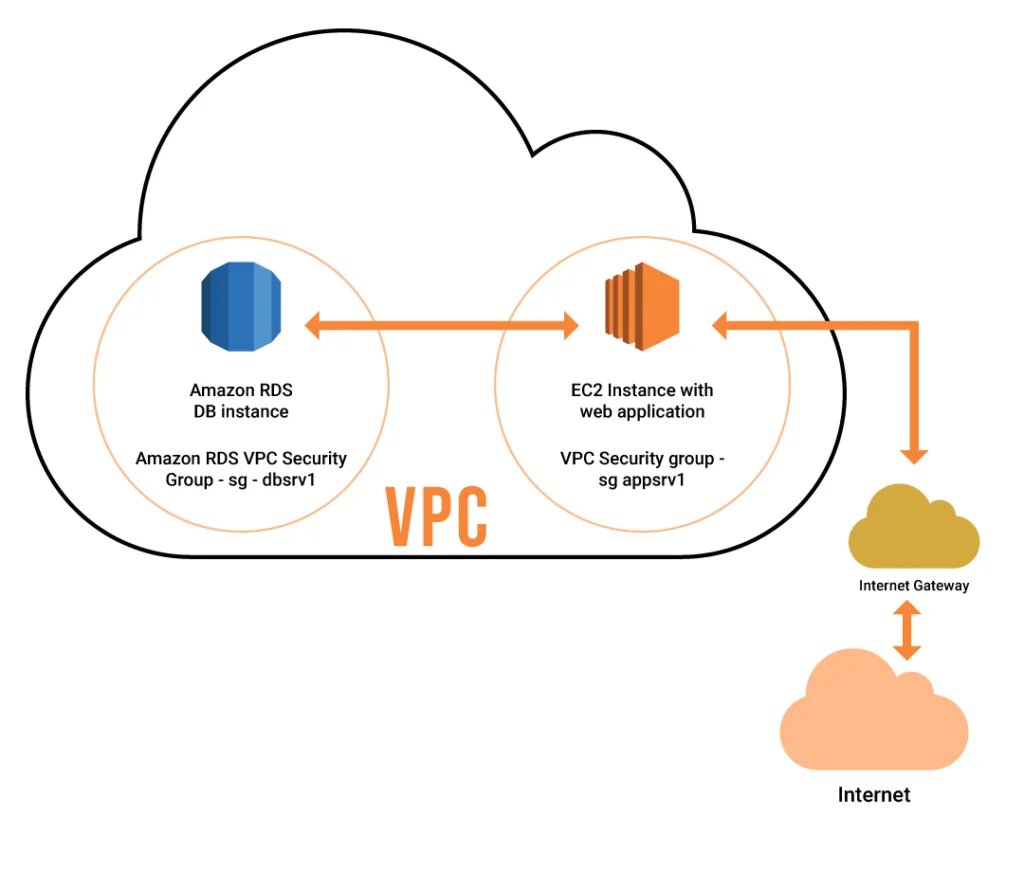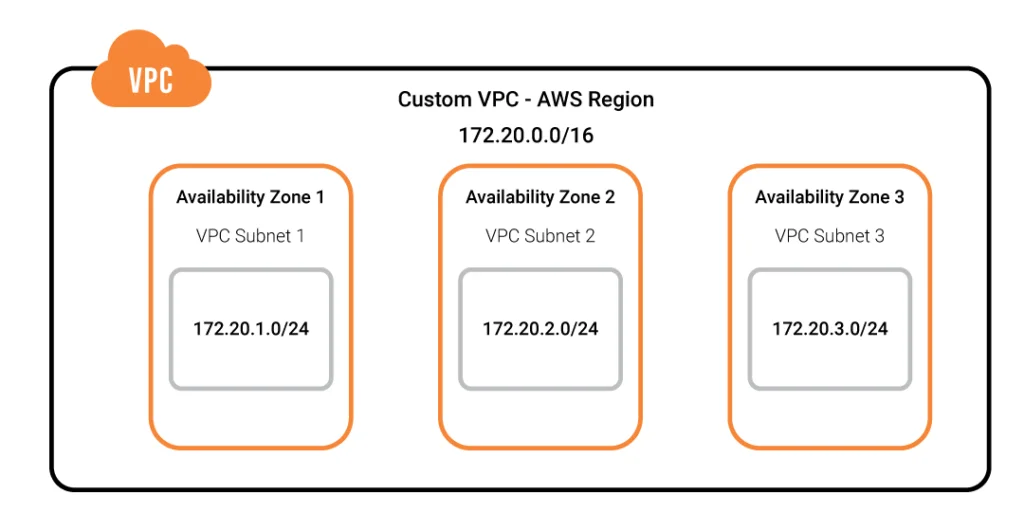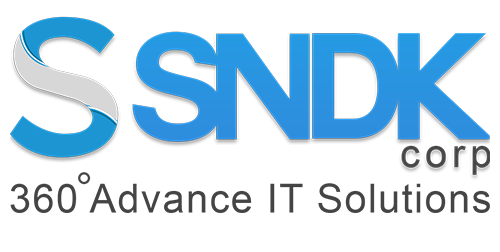Blog
Why Amazon VPC is the backbone of AWS Security? Explore Use Cases, Components and Features.
Security has become one of the prime concerns of the IT sector. You might be using some third-party tools to run your application and, thus, running into the risk of exposing sensitive data to them. Amazon has always been focused on providing a secure network, ensuring its clients are not victims of a data breach. The backbone of the security system of Amazon is the AWS Virtual Private Cloud (VPC). VPC provides you with complete control of the incoming traffic to your network.
What is Amazon VPC?
As the name suggests, VPC is a virtual network specific to your AWS account to hold all your AWS services. It lets you provision your network where you can launch AWS resources. You are in complete control of the system and can easily set up the gateways, route tables, network access control lists (ACL), subnets, and security groups. You can consider VPC as your own virtual logical data centre in AWS.
Why use Amazon VPC?
When you create a service in the public cloud, it is prone to attacks from the internet. AWS VPC is used to lock your instances within a private cloud and secure them from attacks. With AWS VPC, you can decide what kind of traffic, IP addresses, and users can access your instances. This prevents unauthorized access to your resources. Since a few services act without the internet, they can be secured safely within a private network. Only certain services and machines can be exposed to the internet. Further customizations are also available. For example, you can add multiple security layers and even control access to instances in a specific subnet of your VPC.
Components of AWS VPC
As per SNDK Corp, AWS VPC comprises of the following-

1. Subnets:
Subnets are a range of IP’s in a VPC. You can add both IPv4 and IPv6 to your VPC. One must be careful not to declare overlapping IP’s in various subnets. It can be defined as breaking an extensive network into smaller networks. By default, a subnet is set to private, which can be changed to public.
2. Internet Gateway:
To connect your public subnet to the external network, you will need an internet gateway. Internet gateways can be attached to only one VPC at a time. It is the method meant to connect your instance to the internet.
3. Routing Table:
A routing table contains rules about the traffic within and outside the subnet. It also has the entries defining how the subnets can interact with each other.
4. Network Address Translation (NAT) Gateways and NAT Instances:
NAT instances are entities in the public subnet that can access the internet. This access is one way only, i.e., someone from the internet cannot access your instance. However, they are now deprecated and replaced with NAT Gateways. They are much easier to set up and scale.
Top 3 Features of AWS VPC
Here we list the essential features of AWS VPC with the infographic for better understanding.

1. Security:
With AWS VPC, you can store data in Amazon S3 and allow access only through instances in your VPC securing your data. Dedicated instances can be created at the hardware level that is physically isolated from other AWS accounts, adding another security layer. VPC provides you with advanced security features such as the grouping of network and network access control lists.
2. Simple:
The creation of a VPC is a straightforward process. There are various network setups from which you can select the best match. With the seamless and easy process, you can focus more on building your application within VPC rather than managing the infrastructure.
3. Customizable:
AWS VPC is highly customizable. Rather than selecting from standard network settings, we can provide our own set of IP addresses. Custom gateways and route tables can be created. This gives the complete control of security in your hands.
Amazon VPC: Use Cases
A. Hosting a secure website
With AWS VPC, you can create a secure network to host web applications. Rules can be made in the routing table rules, which allow the webserver to respond to inbound HTTP and SSL requests from the Internet while simultaneously prohibiting the webserver from initiating outbound connections to the Internet. Using the method mentioned earlier, you can secure your website from attacks.
B. Extend your corporate network into the cloud
You can shift and extend your corporate network to the VPC. Since it can be hosted behind your corporate firewall, IT resources can be seamlessly moved into the cloud without changing how your users access these applications, making it secure yet straightforward.

Conclusion
AWS VPC does a brilliant job of building a secure network. With the Graphical User Interface, setting up routing tables and subnets has been extremely simple. Moreover, with pay-as-you-go prices, you pay only for the amount of time your resources are in use. It comes with integrated AWS tools so you can work with your S3 buckets and EC2 instances in a VPC without compromising on the security aspect. The IT experts at SNDK Corp will enable you to transfer your web application to the VPC in a hassle freeway.
